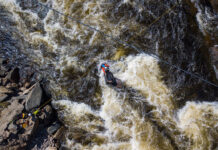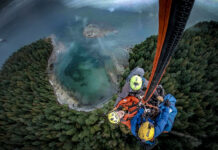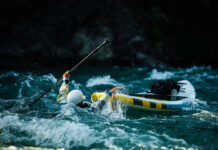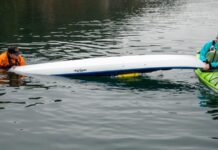The ability to challenge ourselves in almost any environment is one of the great attractions of our small, nimble craft. As quickly as you can find a challenge in your sea kayak, it is just as easy to get in over your head. To avoid ruining a good trip, preparation is key. Identify common problems you could encounter, develop creative solutions, and then try them out— before you get into trouble. Consider these kayaking survival skills as the first ten turns in an endless game of “What if…?”
10 expert sea kayaking survival skills
First aid
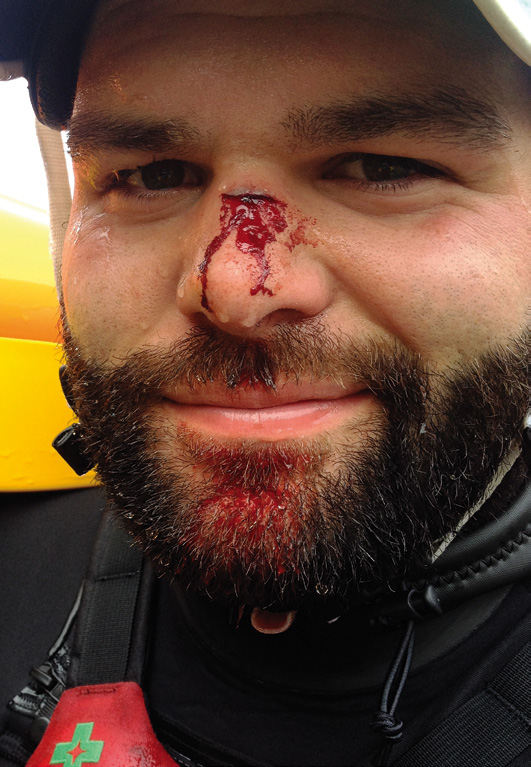
1Staunch bleeding
Some problems can wait a few minutes, but in the case of heavy bleeding it’s important to minimize time spent rummaging for supplies. During a morning of rock gardening with friends, bad timing resulted in my buddy breaking his paddle shaft with his face. As we opened day hatches and retrieved emergency bags, he sat patiently on the ledge that had been his undoing—blood streaming from just below his eye. Keep a compact, waterproof bleeding kit containing gloves and a couple large gauze pads in your PFD for faster response.
2Beat exhaustion
Whether it’s hypoglycemia, hypothermia or just plain old bonking, it’s important to have simple sugars close at hand. When we run low on energy, our ability to make good decisions is one of the first casualties. To deal with a cold, exhausted paddler, or to keep yourself performing at critical times when the next break is still over the horizon, carry a few packets of energy gels or candies.
3Counteract hypothermia
Water saps heat from the body much faster than air. Carry equipment for hypothermia prevention and treatment. Warm up a chilled paddler by dropping a chemical hand-warmer pack down the neck of their drysuit (outside of their base layer). They’ll be basking in a personal-sized sauna that can reverse the cooling trend, even before you’re able to reach shore and employ other warming measures.
Kayak repair
4 Fix a flooded boat
More than just a place to keep your lunch, watertight hatches keep your boat afloat. If you lose a hatch cover or the seal is poor and the compartment floods at sea, pumps are useless. You’ll need to try a curl rescue. With the stricken boat alongside a rescuer’s boat, reach across the rescuer’s deck and grab the open hatch rim, both palms facing up. With forearms resting on the rescuer’s kayak, slowly raise the flooded boat to drain water from the open hatch. Inflate a paddle float in the open hatch rim to create a quick and effective seal.
5Patch punctures
Whether by shark, rock or someone else’s bow (yes, they’ve all happened) any kayak can be holed, and sometimes an on-water repair is the only option. With the unfortunate boater straddling the rescuer’s foredeck, facing aft, both paddlers can pull the holed boat across the rescuer’s spraydeck and turn it upside down to expose the damage. Carry a vacuum-sealed baggie in your PFD with a paper towel to dry the hull and a square of sticky window flashing tape to seal the hole.
6 Paddle in fog
Crossings in limited visibility are best avoided, but they’re a reality of coastal paddling. Stick to the shallows as much as possible and avoid deep-water channels. Stay together and make yourself heard—use a VHF radio and foghorn to reduce the likelihood of close encounters with larger vessels. Chart and compass skills need to be second nature. Navigate with a chart every day you paddle, regardless of visibility or familiarity with the area. Only by employing navigation skills on nice days will you be able to rely on them on bad days.
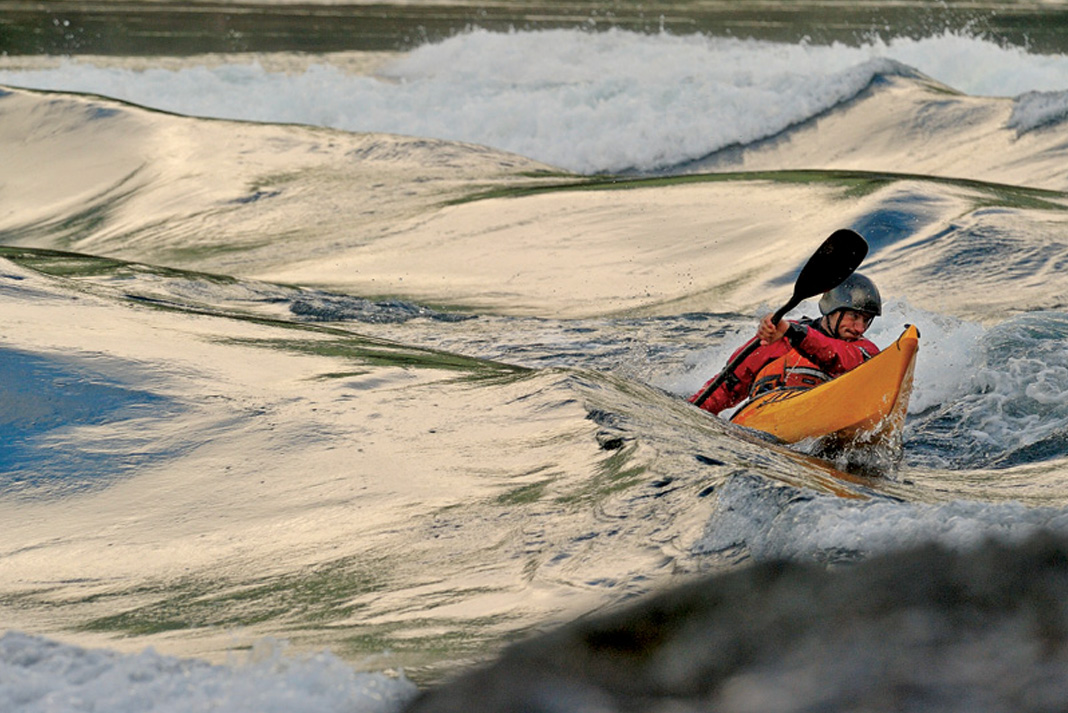
Rescues
7Save a runaway boat
When paddlers are faced with an unfamiliar environment, the basics sometimes fly out the window. On a particularly windy day, a student capsized while surfing steep swell. Momentarily losing contact with her boat, the paddler came to the surface to find the unburdened kayak blown out of her reach. While another student made contact with the swimmer, a second rescuer quickly towed the empty kayak back to her. It is faster to bring the boat to the paddler, rather than the other way around. If you’re the sole rescuer, head for the escaping kayak, tell the swimmer to hold her paddle up in the air for visibility, and quickly tow the boat back to the paddler.
8 Come to the rescue quickly
When extra seconds might mean a long slog back up-current or worse, execute a lightning fast wet-boat rescue. By skipping the longest step—emptying water from the cockpit—you can be on the move in just seconds. Direct the swimmer to right his boat, then move directly to stabilizing the boat as the swimmer heel-hooks (faster and easier for many than a traditional rear deck re-entry) into his cockpit. Contact tow the rescued boat into quiet water or, if it’s stable enough, he can paddle himself to a safer spot for emptying the flooded cockpit.
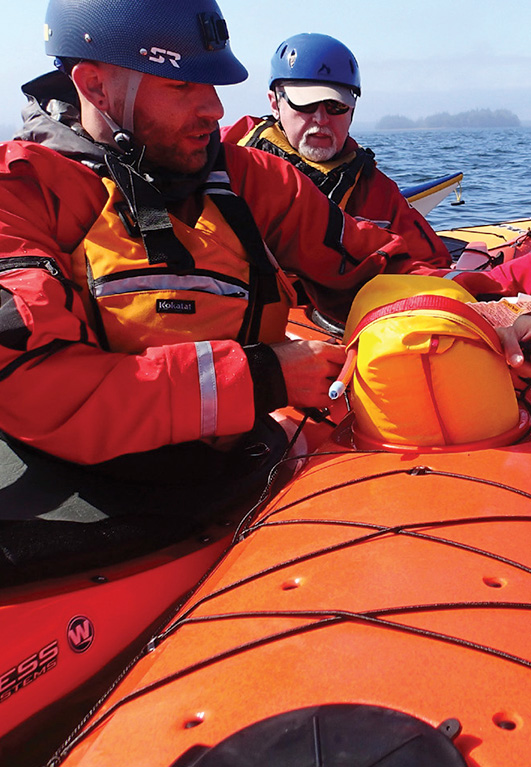
Communication
9 Learn the language
Many kayakers are unsure how to use their VHF radio for clear, effective communication with other boaters. Know the types of safety calls: “Sécurité” for general safety issues such as fog crossings; “Pan-Pan” for incidents where help is required, but there is no danger to life or vessel; “Mayday” for true emergencies. In all cases, make sure to include Who (a description of your group), Where (your precise location, by coordinates or description) and What (the nature of the emergency). Radio calls are difficult to hear in poor conditions. Think about what you will say before you call, and keep your message succinct. Practice making calls with your radio off and have friends give you feedback.
10 Make a float plan
Recently, a paddler set out on a four-day trip from Stonington, Maine. When his cell phone battery died, his worried contact on shore reported him missing to the Coast Guard, setting in motion a costly search. A day later, the paddler was found in an area miles north of his planned route, unaware that the helicopters humming to his south had been looking for him.
Whether it’s a typed document, or a text message exchange from the put-in, float plans are an essential part of every trip. Include a basic description of the group, your route and, most importantly, the time at which you should be reported overdue to the Coast Guard. If your destination, check-in or return time change, update the float plan by talking to your shore contact or calling the Coast Guard.
Nate Hanson lives on Maine’s Downeast coast, where he offers skills and leadership courses through his company Pinniped Kayak.
Feature photo: Steve Rogers



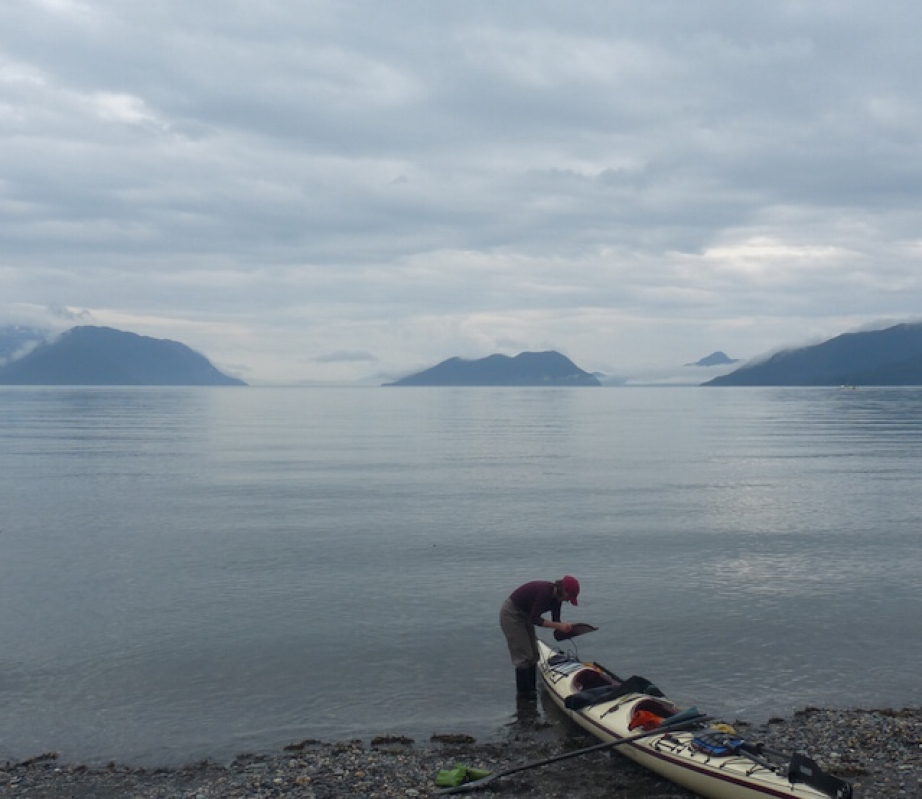
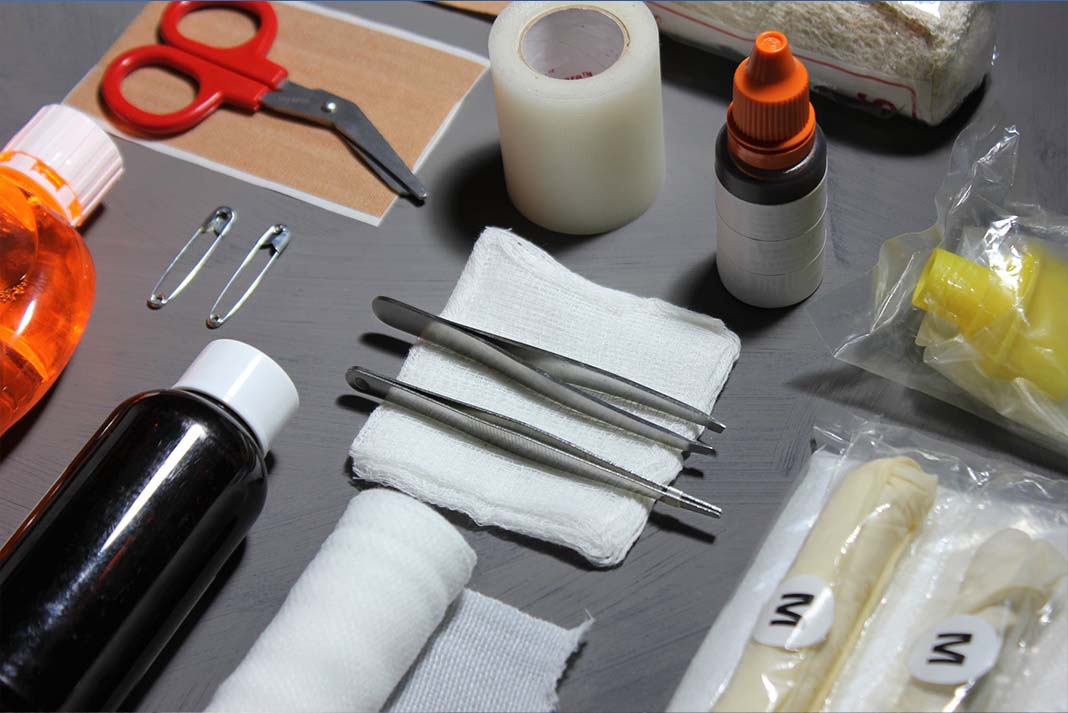

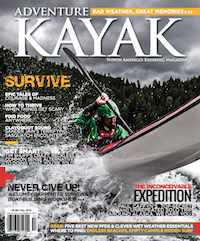 This article was first published in the Fall 2015 issue of Adventure Kayak Magazine.
This article was first published in the Fall 2015 issue of Adventure Kayak Magazine. 